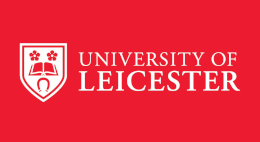Genetic basis of oenological traits in Saccharomyces interspecific hybrids
Wine fermentation has long been conducted using Saccharomyces cerevisiae. As a starter. However, other Saccharomyces species have shown a high potential to diversify the organoleptic properties of wine and tackle the environmental challenges that the wine industry has been facing in recent years.
In this work, we sought to shed light on the phenotypic diversity in the genus Saccharomyces for winemaking. We phenotyped 92 yeast strains belonging to all the current Saccharomyces species in synthetic grape must fermentation. Unexpectedly, all Saccharomyces species fermented efficiently under winemaking conditions. Remarkably, some non-cerevisiae Saccharomyces wild isolates fermented more efficiently than wine S. cerevisiae strains. Regarding metabolite production, we observed interesting specificities at the species level: some non-cerevisiae Saccharomyces produced high amounts of glycerol, succinate and fermentative aromas, or extremely low amounts of acetic acid, compared to S. cerevisiae. Overall, the potential of alternative Saccharomyces was higher than expected, constituting a promising alternative to diversify the current set of commercial yeast strains, either as pure species or following interspecific hybridisation.
Given the interest of these phenotypes, we next aimed to determine their genetic basis through QTL mapping in Saccharomyces interspecific hybrids. Interspecific Saccharomyces hybrids can be easily obtained in the lab, but they are usually sterile, which hinders their application in quantitative genetics. Using a recently developed technique, we constructed a fertile S. uvarum x S. mikatae hybrid and performed QTL mapping with oenological traits in its F12 progeny. We found several loci in the S. uvarum subgenome affecting the production of central carbon metabolites and, to a lesser degree, fermentative aromas and kinetic parameters. Verifying candidate genes will shortly provide new tools for improving S. uvarum and its hybrids in a winemaking context.
Overall, this study uncovered the potential of non-cerevisiae Saccharomyces species to tackle the current challenges of the wine industry.
History
Supervisor(s)
Edward LouisDate of award
2023-08-01Author affiliation
Department of Genetics and Genome BiologyAwarding institution
University of LeicesterQualification level
- Doctoral
Qualification name
- PhD

